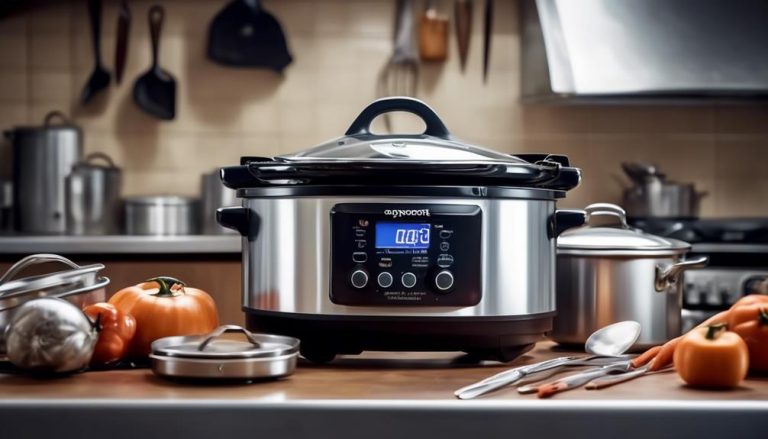How Long Can You Put Hot Coffee In The Fridge?

For many coffee enthusiasts, the question of whether or not to put hot coffee in the fridge has likely crossed their minds. Here’s the scoop on how long can you put hot coffee in the fridge!

A coffee lover might want to store leftover coffee in the refrigerator, but is it a good idea? How much coffee can be put in the fridge, and what kind, before the fresh cup of coffee becomes stale coffee?
A hot cup of coffee is a popular beverage consumed all around the globe.
Coffee lovers are always seeking ways to enjoy their favorite drink, enjoying the coffee taste, and sometimes they might want to store it for later consumption or simply cool it down quickly.
This applies to any type of coffee or hot drink. Including whole bean coffee made with whole beans and instant coffee made with hot water.
However, once the hot brewed coffee comes out of the coffee pot, how can you properly store coffee?
Storing Coffee in the Fridge

Coffee drinks, even ice coffee, need a proper container with a tight lid to retain their extra kick after 2-3 days in the fridge.
Day-old coffee might otherwise lose its bitter taste the next time you get ready to drink it.
We’ve got the scoop on the feasibility of putting hot coffee in the fridge and present some helpful tips to ensure the best results.
While it’s true that you can put hot coffee in the fridge, there are some important caveats to keep in mind.
Transferring a freshly brewed cup of coffee to a refrigerator could potentially cause damage to both the fridge and the coffee’s taste if some precautions are not taken.
To preserve the flavor and maintain food safety, be sure to use an airtight container made from stainless steel or glass. Which resists oxidation and aroma absorption.
This way, your stored coffee can remain enjoyable and prevent any adverse effects that may occur when chilled.
Storing Hot Coffee

In addition to storage concerns, cooling hot coffee quickly and efficiently is another challenge faced by a coffee connoisseur.
Your best option is to immediately take the leftover pot of coffee from the coffee maker and put the rest of the fresh coffee in the fridge instead of letting it sit out for a long time.
A good cup of coffee needs to be stored in a dark place, in a storage container that keeps the process of oxidation away from your fresh pot.
One option is to use an ice bath, an ice cube tray, or add frozen coffee to speed up the chilling process.
While another approach might involve storing the hot beverage in the freezer for up to 40 minutes.
As a general rule, be mindful of heat transfer when trying to store a whole pot so that the pot isn’t damaged when placed in lower temperatures.
Coffee drinks might also place drip coffee, espresso drinks, French press coffee, and any other ground coffee in the fridge.
Remember that although it’s possible to reheat stored coffee, a fresh cup is often the best way to enjoy the full flavor and aroma of your favorite brew.
Why Refrigerate Hot Coffee

Preserving Flavor and Freshness
Refrigerating hot coffee can help to maintain its flavor and freshness for all coffee drinkers. Preserving the best taste coffee can give.
If you have extra coffee, a great way to preserve it for the next day is to place the remaining coffee in a suitable container such as a metallic container.
Or create coffee ice cubes, so your coffee is ready for reheating when the ice melts.
This can be particularly beneficial if you have made a large batch of coffee and want to keep it tasting good for as long as possible.
To do this, simply place your hot coffee in an airtight container like a mason jar and store it in the refrigerator.
This is an easy way to ensure that the coffee remains fresh for up to four days.
No matter what brewing process you use, your best choice is to preserve your coffee in the fridge in a container.
Preventing Oxidation
Oxidation is the process by which oxygen interacts with compounds found in coffee. Leading to a change in taste and aroma.
This affects your coffee in different ways, including if you used whole coffee beans for your coffee grounds.
When hot coffee is exposed to air, oxidation begins which can cause your coffee to go stale.
By refrigerating your hot coffee in an airtight container, you can slow down the oxidation process. Preserving the taste and aroma of your coffee for a longer period of time.
Creating Iced Coffee or Cold Brew
Another reason to refrigerate hot coffee is to create iced coffee or cold brew.
If you prefer a cold coffee beverage, placing hot coffee in the refrigerator can help to chill it down without having to add ice. Which can dilute the flavor of the coffee.
To make iced coffee or cold brew, simply place your hot coffee in the refrigerator and let it cool down so that you now have cold water.
Once it reaches your desired temperature, you can serve it over ice from the grocery store or mix it with your favorite cold brew coffee concentrate from the coffee shop.
Remember, when refrigerating hot coffee, always use an airtight container to prevent the coffee from absorbing unwanted flavors and aromas from other items in the refrigerator.
Additionally, it’s important to separate the hot coffee into several smaller containers, to avoid increasing the overall temperature inside the fridge and potentially spoiling other foods.
Proper Cooling Techniques

Before storing your hot coffee in the fridge, it is important to use proper cooling techniques to ensure the quality and taste of your coffee.
Here’s the scoop on two main methods to achieve optimal results: cooling to room temperature and storing in multiple smaller portions.
Cooling to Room Temperature
Cooling your coffee to room temperature is essential before putting it in the fridge.
As it prevents the possibility of temperature fluctuations that may lead to condensation and affect the aroma and flavor of the drink.
To speed up the cooling process, consider these tips:
- The first thing you want to do is pour your hot coffee into a large, shallow container, which facilitates faster cooling, and leave it uncovered for about 5-8 minutes.
- If you’re in a hurry, you can also use an ice bath to cool your coffee quickly. Prepare a large bowl filled with ice, place your container with hot coffee into the bowl, and stir the coffee gently to help it cool down faster, usually around 10 minutes.
Storing in Multiple Smaller Portions
Storing your coffee in smaller containers can also help shorten the cooling time and maintain the freshness of your beverage.
Opt for these guidelines:
- Divide the hot coffee into multiple airtight, glass containers to prevent oxidation and aroma absorption.
- Smaller portions allow your coffee to cool down faster, and the airtight seal of the containers keeps your drink fresh and ready for when you want to enjoy it.
- Store the containers at the back of the fridge, where the temperature is more consistent, and aim for a storage temperature of 40°F.
By employing these proper cooling techniques, you can ensure that your coffee retains its delightful taste and aroma when stored in the fridge.
Remember to use airtight, glass containers, and avoid using plastic, as it can absorb odors and potentially release harmful chemicals.
When transferring the coffee, you can also use travel mugs or enamel mugs, as these can handle hot temperatures.
Choosing the Right Container

Airtight Containers
When storing hot coffee in the fridge, it’s essential to use an airtight container.
Airtight containers help maintain the coffee’s freshness and prevent oxidation, which can affect the taste of your beverage.
Additionally, using an airtight container stops unwanted odors from seeping into your coffee.
No matter how long coffee stays in the fridge, the last thing you want is oxidation to your coffee.
Glass Vs. Plastic Containers
Choosing between glass and plastic containers is another important consideration when storing hot coffee in the fridge.
While plastic containers may seem more convenient, they should be avoided because:
- Plastic can absorb flavors and odors, which may alter the taste of your coffee
- Some plastics may leach chemicals into your coffee
Glass containers are safer and better options due to their:
- Resistance to absorbing flavors and odors
- Non-reactive nature, ensuring no chemicals leach into your coffee
Mason Jars
Mason jars are a popular and highly recommended choice for storing hot coffee in the fridge.
These jars offer several benefits:
- Airtight seal, which helps to preserve the coffee’s integrity and freshness
- Glass material, ensuring no flavor or odor absorption
- Wide availability, as they can be found in most stores
When storing hot coffee in the fridge, opt for airtight glass containers. Such as mason jars, to ensure your coffee remains fresh and free from unwanted odors or flavors.
Positioning in the Fridge

Back of the Fridge
To ensure your hot coffee cools properly in the fridge, it is recommended to place it at the back of the fridge.
This area provides the most consistent temperature and helps speed up the cooling process.
Additionally, keeping the coffee at the back prevents unintended spoilage of other food items nearby.
When positioning the container, make sure there is ample space around it for proper air circulation.
Also, be sure to keep the expiration date in mind when handling any coffee.
Avoiding Light and Moisture
To preserve the taste and aroma of your coffee, it’s important to avoid exposure to light and moisture.
Here are a few tips to achieve this:
- Use airtight, glass, or stainless steel containers that block light and prevent oxidation.
- Ensure the container is tightly sealed to avoid moisture from entering.
- Keep the container away from any moisture-producing appliances, like a fridge condenser or a humidifier.
By following these suggestions, you can successfully cool and store hot coffee in the fridge. While maintaining its freshness and flavor.
Effects of Refrigeration on Coffee Elements

Impact on Sugar and Dairy
Refrigerating coffee with sugar and dairy, such as milk or creamer, can lead to changes in flavor and texture.
Refrigeration may cause the sugars to crystallize, resulting in a less sweet taste or a grainy texture.
Additionally, dairy products might separate or curdle, impairing the creaminess and overall quality of the coffee.
- Sugars may crystalize, causing a less sweet taste
- Dairy products may separate or curdle, affecting the creaminess
Refrigerating black coffee, on the other hand, does not have these added elements, and its flavor will not be significantly impacted by the presence of sugar or dairy components.
Oxidation Process
When hot coffee is put into the fridge, oxidation occurs.
Oxidation is a natural process that happens when oxygen interacts with the coffee’s oils and compounds.
This can affect the flavor of the coffee by making it sour and leaving an expired taste.
The following factors can influence the oxidation process in refrigerated coffee:
- Exposure to air and oxygen
- The temperature of the refrigerator
- The type and quality of coffee beans used
To mitigate the effects of oxidation while refrigerating hot coffee, it is recommended to store the coffee in a vacuum-sealed container.
This limits the exposure of coffee to air, slowing down the oxidation process and helping to preserve the coffee’s original flavors.
Reheating Refrigerated Coffee
Using the Microwave
To reheat coffee in the microwave, follow these steps:
- Pour the refrigerated coffee into a microwave-safe cup.
- Heat the cup in the microwave for around 30-45 seconds, depending on the wattage of your microwave and the desired temperature.
- Check the temperature of the coffee and microwave again for a few more seconds if needed.
- Stir the coffee gently before serving to ensure uniform heat distribution.
It is important to avoid overheating the coffee, as this may make it more acidic and negatively affect its taste.
Retaining Taste and Flavor

To preserve the taste and flavor of reheated coffee, consider these tips:
- Reheat the coffee slowly and gently, as suddenly exposing it to high temperatures could cause its flavor and aroma molecules to break down.
- Keep your reheated coffee away from other strong-smelling foods, as odors can easily be absorbed by the coffee and alter its flavor.
- Use a stovetop heating method as an alternative to microwaving, since this method can provide a more gradual and controlled heat source, ensuring better-tasting coffee.
Following these guidelines will help you enjoy reheated refrigerated coffee without sacrificing its taste and quality.
Common Concerns and Myths
Staling and Souring
One common concern when it comes to storing hot coffee in the fridge is the potential for the coffee to become stale or sour.
While it’s true that coffee can lose some of its freshness once it has been refrigerated, the short answer is there are ways to mitigate this issue.
For example, use an airtight, spill-proof container to store the coffee, as this can help preserve its flavor and aroma, or create coffee cubes in the freezer
By doing so, you can enjoy your coffee for a longer period without worrying about it becoming stale or sour.
Absorbing Odors or Flavors
It’s also worth addressing the myth that refrigerated coffee will absorb odors or flavors from other foods stored in the fridge.
Although this can happen if you store your coffee in an open container, it’s easily preventable by using an airtight container for storage.
This prevents the coffee from coming into direct contact with any other items in the fridge and stops it from absorbing any unwanted odors or flavors.
It’s crucial to ensure proper storage not only to preserve the taste of your coffee but also to avoid any potential cross-contamination.
Storing hot coffee in the fridge can be done effectively if you follow the proper precautions.
Using an airtight container and placing it away from other foods will help maintain the quality and taste of your coffee when refrigerated.
Additional Storage Tips

Coffee Concentrate
One way to maximize storage efficiency and extend the shelf life of your coffee is to create a coffee concentrate.
To do this, simply brew your coffee at a stronger concentration and store it in an airtight glass container before placing it in the refrigerator.
When you’re ready to enjoy your coffee, dilute the concentrate with water or milk to your desired strength.
This method not only saves space in your fridge but also preserves the flavor and freshness of your coffee.
Managing Shelf Life
To ensure the best possible taste and quality of your stored coffee, it’s crucial to manage its shelf life appropriately.
Here are some tips on how to do this:
- Store your coffee in an airtight glass container, such as a mason jar, to prevent oxidation and aroma absorption.
- Refrigerate your coffee as soon as possible after brewing to maintain its freshness. Let it cool down for a couple of minutes, but not too long, since prolonged exposure to room temperature can also affect the taste.
- Label your container with the date of storage to easily keep track of its shelf life. Refrigerated coffee can last for up to 3-4 days, but the taste may become less intense over time.
- If storing leftover hot coffee, consider giving it an ice bath or adding frozen coffee to speed up the cooling process before refrigeration. This can reduce the waiting time from up to 40 minutes in the freezer to just 10 minutes, minimizing the risk of compromising the taste.
- Refrain from storing hot coffee in plastic containers, as they may absorb odors and flavors from the fridge, altering the taste of your coffee.
By following these simple storage tips and techniques, you can enjoy a delicious cup of coffee while maximizing its shelf life and maintaining its quality.
Final Thoughts
While it is possible to put hot coffee in the fridge for later consumption, there are some potential risks that come with this.
Depending on how long you plan to store your coffee and what type of container you’re using, putting hot coffee into a refrigerator can cause condensation or even spoilage.
Additionally, cooling down very hot liquids too quickly causes them to lose flavor more rapidly than if they had cooled at room temperature.
If you decide to chill your brew ahead of time be sure to use an airtight container and consume within 24 hours for best results.

Get the scoop on more like this:






